From the September 2014 issue of Apollo: preview and subscribe here
The Parisian art dealer Paul Durand-Ruel played an instrumental role in the rise of the Impressionists, backing these strikingly modern artists and building up a market for their work. This article was first published in the September 2014 to coincide with the opening of the exhibition at the Musée du Luxembourg
The French art dealer Paul Durand-Ruel (1831–1922) set the stage for the emergence of the 20th-century art market. Having started out working for his father’s art supplies shop-cum-gallery, he would eventually deal in the most sought after contemporary painting of his day; his most important legacy stems from his promotion of the Impressionists, who arguably would not have enjoyed the success they did, and still do today, without his constant financial and moral support. Next month, the first major exhibition dedicated to this instrumental figure opens in Paris: ‘Paul Durand-Ruel: The Gamble on the Impressionists’ (9 October–8 February 2015) will be shown at the Musée du Luxembourg before travelling to London and Philadelphia next year.
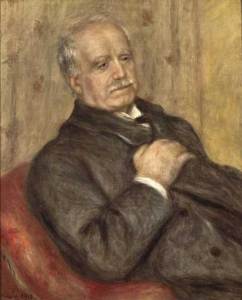
Paul Durand-Ruel (1910), Pierre-Auguste Renoir. Private collection. Archives Durand-Ruel © Durand-Ruel & Cie
‘He was the first dealer to associate his name with an avant-garde movement,’ says Sylvie Patry, chief curator at the Musée d’Orsay and one of the exhibition’s curators. She argues that Durand-Ruel developed a new way of working with artists, offering long-term support and promoting their work in France and abroad. ‘He also contributed to forging his own myth,’ adds Patry. ‘From the turn of the 20th century he was considered the modern art dealer.’ But Durand-Ruel’s rise to art world prominence was not without its challenges. He faced years of opposition and financial woes before the Impressionists were accepted widely by collectors and institutions.
After inheriting his father’s gallery in 1865, and working with modish – and commercially successful – artists such as William-Adolphe Bouguereau, Durand-Ruel’s first leap of faith was championing the Barbizon School. ‘He considered the Impressionists as the successors of this 1830s generation,’ says Patry. Indeed, it was Charles-François Daubigny of the Barbizon school who introduced Durand-Ruel to Claude Monet in London in January 1871. Durand-Ruel had started to organise exhibitions of French art in the British capital during the Franco-Prussian war, and would include two of Monet’s paintings in his fifth London exhibition in 1872: Green Park, Londres and Saint-Germain-l’Auxerrois.
Although Monet’s paintings were not particularly well received at the time, this was the beginning of an important and long-standing relationship. It is also an example of Durand-Ruel’s technique of sneaking Impressionist painters into exhibitions of more established artists. It was, says Patry, ‘a little bit like a Trojan horse. He would exhibit a lot of Barbizon paintings and a few Impressionists, then he would increase the dose.’ The exhibition includes paintings by Corot, Delacroix, Rousseau and Millet to repeat the visual connection that Durand-Ruel made at the time: that the sketch-like plein air canvases of the Impressionists are the logical development of Barbizon artists’ keen observation of nature.
Despite Durand-Ruel’s success with the Barbizon School, he had a hard time drumming up support for his new artists in the 1870s. The second Impressionist exhibition was held in Durand-Ruel’s gallery in rue Le Peletier in 1876 and was a commercial flop. Financial crises in the 1870s and the collapse of the Union Générale bank in 1882 both left Durand Ruel in dire straits, but he continued to support his artists against the odds. ‘Without Durand, we would have died of starvation, all of us the impressionists. We owe him everything,’ Claude Monet told the French critic and art historian Marc Elder in 1924: ‘he persisted, persevered, he risked bankruptcy twenty times over to support us. The critics dragged us through the mud; but for him it was even worse! They used to write: these people are mad, but there is someone madder than them, the dealer who buys their work!’
Durand-Ruel had a lucky break in 1886, in the form of an invitation from James Sutton of the American Art Association to organise – all expenses paid – an exhibition in New York. Puvis de Chavannes refused to be involved, and Monet was reluctant to see his paintings ‘go to Yankee country’ (they eventually did). But Durand-Ruel had support from the well-connected American painter Mary Cassatt, who introduced him to collectors who would become faithful and influential clients, including Louisine and Henry Havemeyer and Bertha Palmer.
‘Durand-Ruel had the good luck and intelligence to create relationships with certain high society figures,’ says Patry: ‘There was an emulation effect.’ By the early 20th century any American with artistic pretensions had to have a few Impressionist works in their collection. Durand-Ruel’s tenacious character and faith in his enterprise may also have played well with a generation of successful, self-made businessmen. Unlike in Europe, the American audience was unencumbered by archaic social codes. ‘They didn’t have the tradition of academic institutions,’ says Patry: ‘Durand-Ruel bet that this new society would have a new way of seeing things and would like a new style of painting. And this intuition is proved right, as he had lots of American collectors among his clientele from the end of the 1880s.’ In 1888 Durand-Ruel opened his own gallery at 297 5th Avenue in New York; and by the early 1890s his debts were paid off and his backing of the Impressionists had even gained some acceptance in France. The Musée du Luxembourg acquired its first Impressionist painting in 1892, Renoir’s Jeunes filles au piano.
‘It’s a fantastic story’, says Flavie Durand-Ruel, Durand-Ruel’s great-great-granddaughter. Flavie and the dealer’s great-grandson, Paul-Louis Durand-Ruel, manage the Durand-Ruel archives and have been working in close collaboration with the museum for the exhibition. Flavie explains that Durand-Ruel originally wanted to be a missionary or in the military. His messianic fervour carried through into his faith in the new avant-garde artists. ‘He was criticised and treated like a madman but he continued to exhibit their work, to pay for their supplies…he provided constant moral support, and financial support as soon as he could.’
As well as their involvement with the exhibition, Flavie and Paul-Louis work in collaboration with auction houses to provide documentation for paintings that passed through Durand-Ruel’s gallery (the archives include a photographic record of all the paintings sold by Durand-Ruel’s gallery from 1894 onwards: more than 12,000 paintings). They have also co-edited Durand-Ruel’s memoirs, which will be published by Flammarion to coincide with the exhibition.
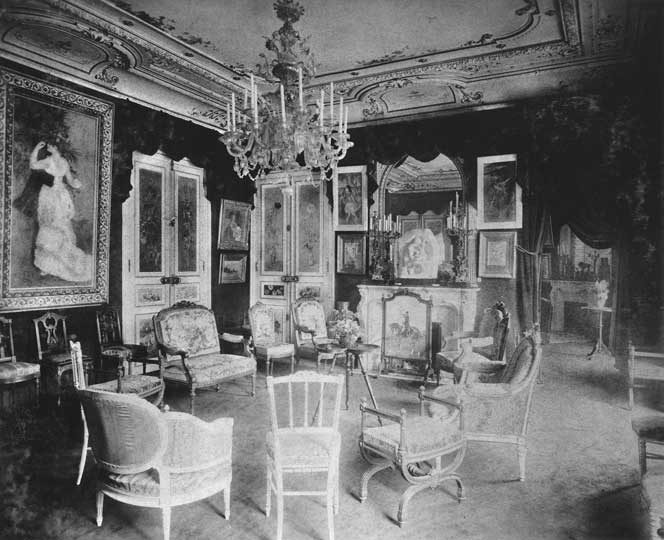
The grand salon at Rue de Rome with ‘Dance in the City’ by Renoir Photograph: Archives Durand-Ruel © Durand-Ruel & Cie.
So is this passion for art now a family tradition? ‘In my grandparents’ apartment there were always absolutely magnificent paintings on the walls, but we didn’t talk about them,’ says Flavie: ‘They were on the walls, something to be appreciated, loved, experienced…It was not at all something that was imposed.’ Even so, it is not hard to spot the thread of art appreciation and collecting that runs through the family. Denyse and Philippe Durand-Ruel boast one of France’s major contemporary art collections, particularly rich in Nouveau réalisme: Yves Klein, Arman, César. Christophe Durand-Ruel ran a contemporary art gallery in the 1990s and is now director of the contemporary art department at Christie’s Paris; Claire Durand-Ruel Snollaerts is a Pissarro expert; and Caroline Durand-Ruel Godfroy specialises in the work of the Post-Impressionist Maxime Maufra.
Today it is hard for most people to imagine growing up around the art of the Impressionists, but conceiving how a Monet or a Renoir would look chez soi was an important consideration for the late 19th-century client, and became an integral part of Durand-Ruel’s sales technique. He regularly welcomed collectors and customers to his apartment and, from 1900, opened it to the general public with opening hours and ticket prices published in guide books, as if it were a museum.
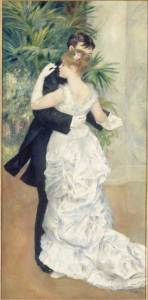
Dance in the City (1883), Pierre-Auguste Renoir © RMN-Grand Palais (musée d’Orsay) / Hervé Lewandowski
Described variously as ‘a treasure trove of Impressionism’ by Flavie, and as ‘a sort of commercial tool’ by Patry, Durand-Ruel’s apartment will be evoked in the first room of the exhibition with a photo of his salon, door decorations designed by Monet, and of course Impressionist masterpieces including Renoir’s Danse à la ville and Danse à la campagne (both 1883 and in the Musée d’Orsay collection), which Flavie remembers from her grandparents’ apartment. ‘When you see photos of his apartment, you see that his furniture is quite classic and not particularly harmonious,’ recounts Flavie, with a smile: ‘It’s great because the paintings are super contemporary but in Louis XVI frames among very classical furniture…It showed potential clients with classical tastes that they could still buy contemporary works.’
This contrast in Durand-Ruel’s tastes extends to his seemingly contradictory ideologies. A devout Catholic with royalist leanings, Durand-Ruel was perhaps not the most likely of candidates to become a champion of the artistic avant-garde. ‘He was extremely conservative in his ideas,’ says Flavie, ‘and extremely revolutionary in his artistic choices. But totally convinced in each case.’ This is what characterises Durand-Ruel: his ardent and unerring support for things he believed in.
It was Durand-Ruel’s belief in his artists that meant he was so implicated in the Impressionists’ story. ‘When you read the letters between Durand-Ruel and the Impressionists, he is always the one proposing new exhibition ideas, suggesting they go to the States, to London,’ says Patry. ‘He’s always the one who finds solutions to promote the artists.’ ‘His letters are so full of enthusiasm,’ says Flavie: ‘reading one of them everyday would be a great anti-depressant!’
Durand-Ruel put both his faith and his wallet into art he believed in. When he first encountered two of Édouard Manet’s paintings in 1872, in the studio of Belgian painter Alfred Stevens, he bought both before proceeding directly to Manet’s studio, where he bought its entire contents (23 paintings) at the asking price. Nor did he stop there, asking Manet if he had any more. Manet obligingly gathered paintings he had left with friends and colleagues, including La Musique aux Tuileries (1862) and L’Enfant à l’épée (1861) – and Durand-Ruel bought them, too.
Manet never exhibited with the Impressionists but held on to the traditional aspiration of being exhibited at the Salon. On his death in 1883, the artist’s mother insisted that Durand-Ruel be entrusted with the sale of the artist’s studio, as he was the first to have shown any real support for her son. Again history has proved Durand-Ruel right: Manet’s painting is of course now central to any art-historical discussion on the origins of modern art. In addition to his historically significant role in supporting and promoting the Impressionists, Durand-Ruel looms large as a bench-mark for art dealers and gallerists today. ‘There is a deep-rooted idea that the dealer is someone who should be a visionary and discover the next generation of artists before anyone else,’ says Patry. ‘I think that most gallerists today want to play this role of trailblazer…He was someone who liked to gamble, who had entrepreneurial flair…But all this was rooted in a profound love of the painting he was defending.’ For Durand-Ruel, gambling on the Impressionists paid off. As he wrote himself towards the end of his life: ‘my madness was wisdom. To think that if I had died aged 60, I would have died penniless and crippled with debt, amongst unknown treasures.’
‘Le pari de l’impressionnisme’ (Gambling on Impressionism) was a the Musée du Luxembourg, Paris, from 9 October 2014–8 February 2015.
The show tours to the National Gallery, London, (under the title ‘Inventing Impressionism’) from 4 March–31 May, and to the Philadelphia Museum of Art (‘Discovering the Impressionists: Paul Durand-Ruel and the New Painting’) from 24 June–13 September.
Click here to subscribe to Apollo
Related Articles
Paul Durand-Ruel: Gambler, Discoverer or Inventor? (Peter Crack)
Editor’s Letter: A Historic Business (Thomas Marks)
Unlimited access from just $16 every 3 months
Subscribe to get unlimited and exclusive access to the top art stories, interviews and exhibition reviews.

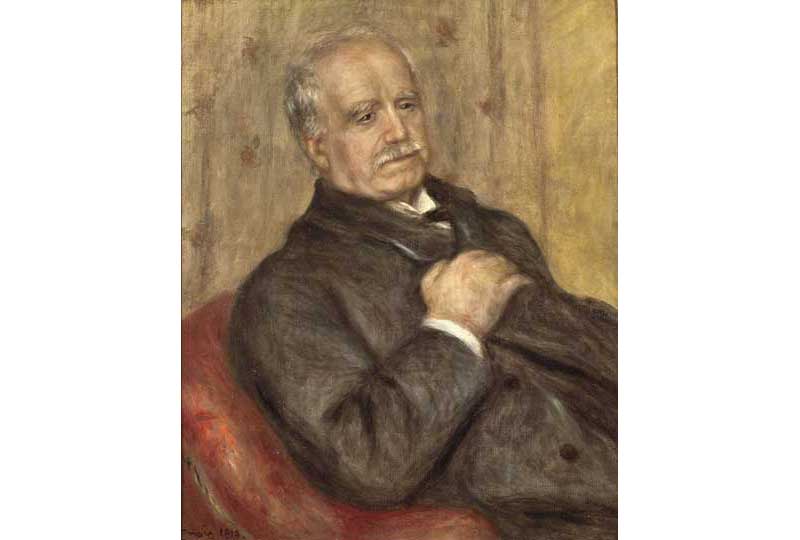
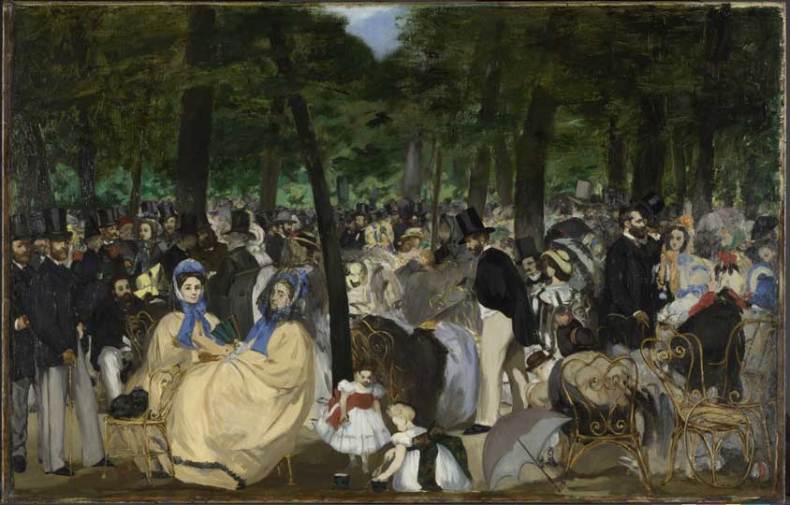
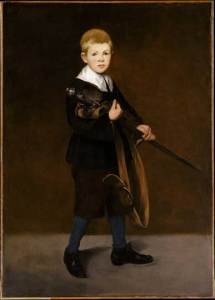

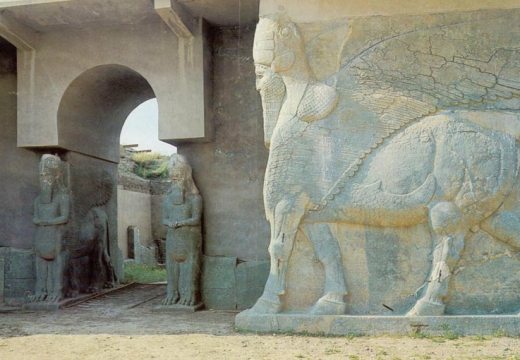
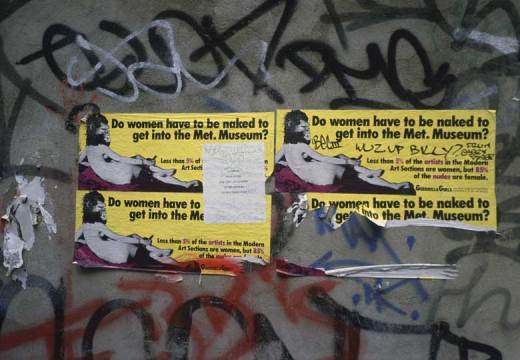









![Masterpiece [Re]discovery 2022. Photo: Ben Fisher Photography, courtesy of Masterpiece London](http://www.apollo-magazine.com/wp-content/uploads/2022/07/MPL2022_4263.jpg)
Why are fathers so absent from art history?